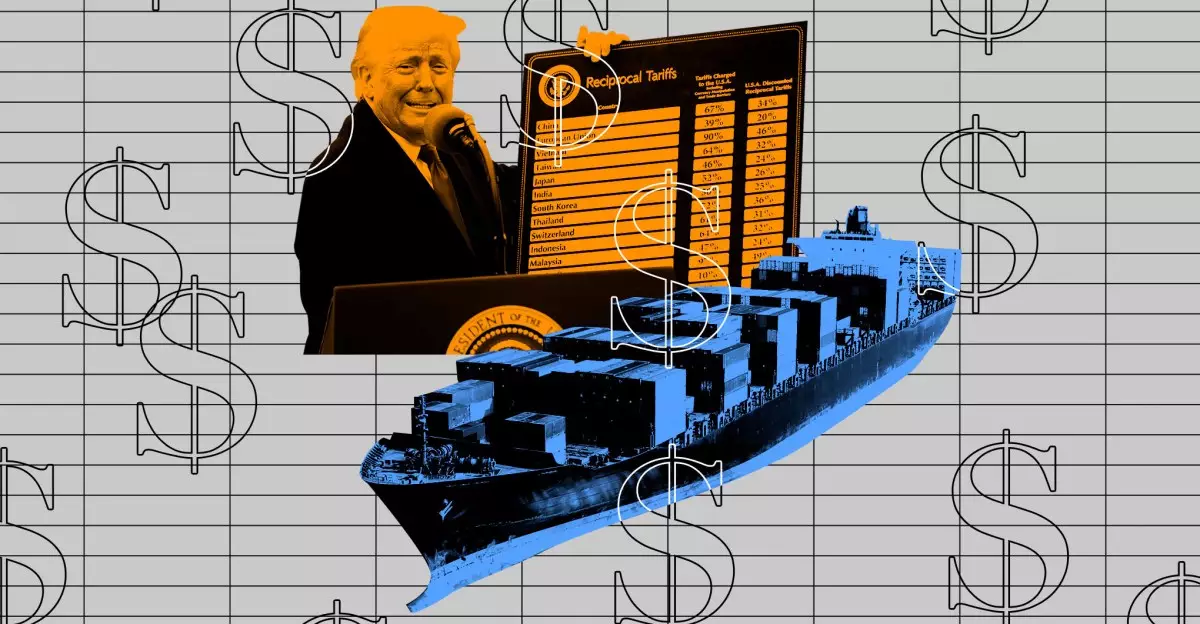In an unexpected twist within the arena of international trade, an updated directive from U.S. Customs and Border Protection (CBP) has brought about favorable changes for consumers interested in technology imports. The latest guidance, which exempts key consumer electronics like smartphones and laptops—including those sourced from China—hints at a strategic pivot away from previous tariff-heavy policies mandated during the Trump administration. Notably, while the new regulations do alleviate some pressures on consumer tech, they do not completely eliminate the overarching complexities still embedded within tariff applications, particularly concerning older tariffs and additional duties.
Historically, the landscape of trade relations between the United States and China has been marred by escalating tariffs, aimed ostensibly at addressing trade imbalances and national security concerns. However, the latest exemption signals a recognition of the pivotal role that technology products play in the American economy. This policy shift not only underscores a possible thaw in trade tensions but also highlights the government’s awareness of consumer sentiment amidst rising prices and inflation.
The Broader Economic Impact of Tariff Exemptions
With the exclusion of products such as computer processors, memory chips, and other essential electronics from the heightened tariffs imposed by the previous administration, consumers could see a respite from rising tech prices. Traditionally, the imposition of tariffs has led firms to absorb those costs or pass them on to end-users, potentially resulting in price hikes of beloved gadgets. Companies like Sony and OnePlus have already shown signs of responding to these tariffs, adjusting retail prices in anticipation of cost increases. By excluding these critical tech imports from additional tariffs, the CBP may be enabling companies to maintain their pricing strategies without heavy inflationary pressure, at least in the short term.
This dynamic can encourage innovation and ensure accessibility to cutting-edge technology for a wider demographic. Lower costs may stimulate competition among tech companies, thereby enhancing consumer choice and driving quality improvements. Furthermore, as the consumer electronics market burgeons, maintaining a favorable pricing structure becomes crucial for sustaining growth, especially against the backdrop of economic uncertainty and changing consumer behaviors.
China’s Role in the Tech Equation
China remains a key player in the global technology supply chain, and this latest exemption from tariffs acknowledges that reality. Although political rhetoric surrounding trade with China often focuses on strategic competition, the economic interdependence cannot be dismissed. The production capabilities of countries like China have made them indispensable in the tech landscape. By alleviating some of the tariff burdens on consumer electronics, the U.S. government is tacitly recognizing the necessity of this partnership.
Interestingly, the exclusions extend beyond just consumer products; they also encompass essentials for semiconductor manufacturing. These advancements are squarely at the intersection of national security and economic viability. Major firms like Taiwan Semiconductor Manufacturing Co. depend on such tariff exemptions to sustain their production and thereby support the overall technology ecosystem. As the U.S. grapples with its semiconductor shortage, fostering relationships with manufacturers and minimizing barriers to essential imports could prove crucial.
A Balancing Act: Navigating Existing Tariffs
Although this modification in tariff policy resonates positively with consumers, it still raises questions about the broader approach to tariff applications moving forward. The updated guidance inevitably leaves some existing tariffs intact, which may still strain prices for a range of products and services. Furthermore, specific duties introduced to combat issues like fentanyl trafficking remain, illustrating the complexity of the current trade environment.
A careful evaluation of these relationships around duties and tariffs is vital, as the repercussions could ripple throughout various sectors, affecting businesses, consumers, and economic growth alike. Policymakers must consider the ramifications of existing tariffs as they continue to craft measures that balance economic interests with national security concerns. The evolution of this trade policy will be critical in shaping the future of U.S.-China relations and determining whether consumers can truly benefit from more accessible technology.
The current milieu of tariff exemptions and broader trade policies presents a unique opportunity for reflection and recalibration. As pressures build in the form of existing tariffs, a comprehensive, cohesive approach that prioritizes consumer interests while navigating complex geopolitical landscapes seems not just achievable, but necessary.

